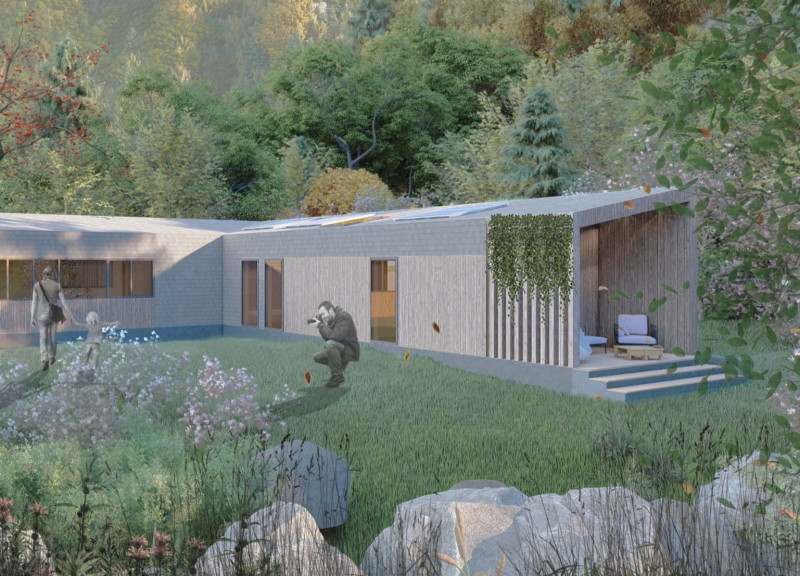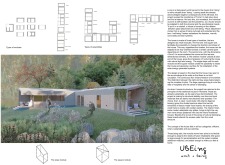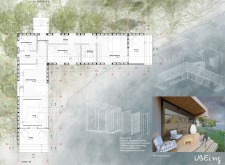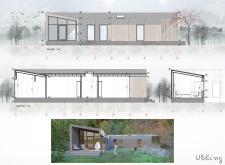5 key facts about this project
The layout consists of three primary modular types: square, slope, and exterior modules. The square module serves as the primary functional space that can be reconfigured for diverse residential needs. The slope module introduces a dynamic roofline, contributing to the building's overall architectural expression, while the exterior module enhances the connection between indoor spaces and outdoor environments.
Sustainability is a key focus in the material selection for this project. The facade utilizes clay panels that offer natural insulation properties, complemented by a wood structure that provides durability and supports energy efficiency. Metal sheets are used for roofing, ensuring weather resistance while contributing to the overall aesthetic. This strategy not only preserves the ecological balance but also fosters a climatic harmony within the living spaces.
Flexible Design Approach
What distinguishes "USEing unit + being" from many other residential projects is its emphasis on adaptability and personal connection to space. The modular system allows residents to easily alter the layout to suit changing needs. This focus on flexibility encourages a sense of ownership over one's living environment, adjusting spaces for individual or communal use as desired.
The integration of 'crochet connections' within the design further enhances the residential experience. This concept promotes interaction among occupants while providing private nooks for reflection and solitude. The careful arrangement of spaces ensures that residents can engage with their surroundings while still feeling a sense of privacy.
Materiality and Environmental Considerations
The choice of materials plays a significant role in the design's identity. The combination of clay, wood, and metal addresses both aesthetic appeal and functional requirements. Clay panels not only provide thermal insulation but also resonate with the natural landscape, anchoring the building contextually. The use of timber for structural elements aligns with sustainable practices, presenting a renewable resource that offers durability. Moreover, the design's large openings facilitate natural light flow and views of the surrounding environment, enhancing the occupants' quality of life.
The roof's sloped design adds an architectural rhythm that encourages natural ventilation, reducing reliance on mechanical systems. This responsiveness to climatic conditions positions "USEing unit + being" as a forward-thinking architectural project that respects both environmental integrity and user comfort.
Exploring "USEing unit + being" provides insight into innovative architectural concepts and the application of modular design principles. For those interested in delving deeper into the nuances of this project, including architectural plans and sections, as well as specific design elements and ideas, a thorough presentation is available for further engagement.


























